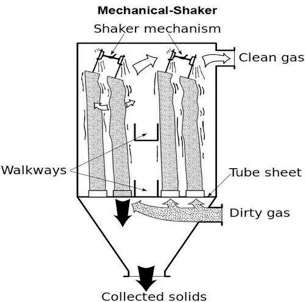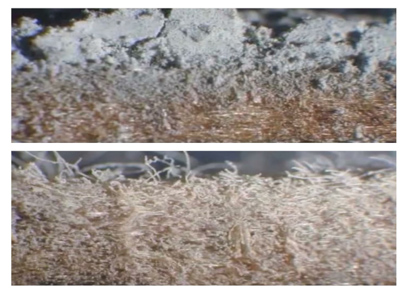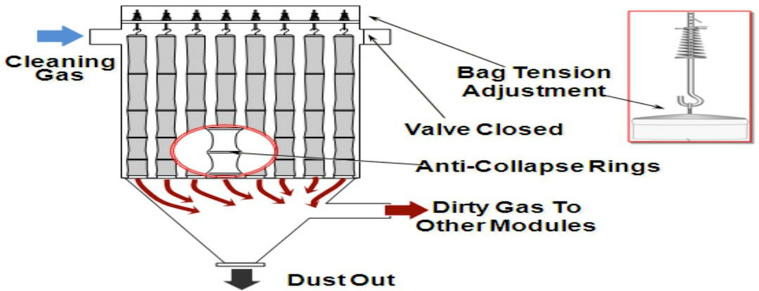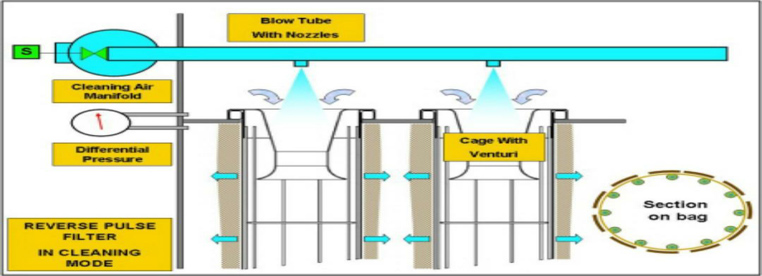Industrial high temperature filter cleaning solutions to attenuate potential particulate risk.
Imagine if the integrity of two factors; high durability and high permeability of your hot filter element during high-temperature filtration is just a few steps away to attain. And demolish the potential particulate risk factor during hot gas filtration.
Wondering? “I’m already accomplishing the best aesthetics and are perfectly adept in the market” but you might be just missing a dart.
Did you ever realize the specific risk of dry heat (Hot Gas Filtration) during the high-temperature differences between the containers and the ambient air?
Well! Maybe not quite intensively then, because it is adequately not possible directly to minimize the risk of contamination from the airborne particles/particulate matter. Now these particles are released from the surface of the heating chamber.
Resulting; contamination of final products from hot gas r manufacturer.
But once you accumulate the importance of this process, you’ll be just the right amount of allude. By enabling not only furthermost control measures like
in Hot Gas Filtration also efficiency particulate air filtration.
That’s right, once you know how to withstand challenges in high-temperature differences of 10000 C (Heat zone) and 2500 C (Cooling zone). You’ll meet your desired high-performance rate under high-temperatures.
Are you ready to accumulate the best cleaning solutions for your high temp filters?
The way you go! Before acknowledging cleaning solutions, let’s have a look at which types of cleaning techniques are best conducive for your components.
For quick understanding, the cleaning techniques of high-temperature filters have been categorized into three methods:-
Now to get the maximum durable outcome out of these cleaning methods, proper high temp filter elements have to be identified.
In the case of High-Temperature Gas Filtration, metal filter elements are considered to withhold the differential hot gas filtration velocities up to 2.5 m/min and temperature ranging between ambient air and 600-1000oC.
Metal High-Temperature Air Filter Elements:
Process:
Tubular filter bags are uptight to the tube sheet at the bottom of the baghouse hot gas filter element which is slung from a horizontal beam at the top of it. When the dirty hot gas enters the baghouse element, the larger particles get separated by gravity settling which is often processed by a cyclone action (not necessarily). Provided that the direct impact of particles on the bags from the conveying line is prevented during dust filtration.
The cleaning of the elements by mechanical shaker is carried out by shaking the top horizontal beam from which the elements are slung.

Fig 1.2 Before HEC*

Fig 1.3 After HEC*
(*High Efficient Cleaning)
Thus the motion imparts the hot filters dust cakes in several ways (as shown in Fig 1.1) but the general intention is to make harmonic or sinusoidal movement along with the fabric. When the limit of the fabric reaches a point of its extension, the patches of dust from hot filters are imparted from the fabric and collected in the hopper.
Parameters of shaking the Filter Elements:- Typical values are about 4 Hz for frequency and 50 to 75 mm (2.0 – 3.0 inches) for amplitude value (½ stroke). The tension is always set when only the hot filter bag elements are attached.
Reverse Air Cleaning Method in Hot Gas Filtration was developed as a minimal intensive approach to dislodge/impart energy to the filter elements.
When the glass fiber fabrics were established, a softer means of cleaning the high-temperature filter elements were processed. In which to prevent degradation, the parameters were changed to 300 mm in diameter and 10 meters in the length of filter bags.
Process:
Reverse Air Cleaning during High-Temperature Filtration is the same as Mechanical Shaker Method, imparting it’s the methodical approach through suspension from adjustable hangers, and also clean air is injected into the chambers of hot filter elements in the reverse direction.

Fig 2.1 Reverse Air Cleaning Method
This cleaning process is compartmentalized. Before the cleaning process is initiated, the gas filtration is stopped in the compartment to be cleaned. High-temperature Filter elements/ dust collectors are injected with clean air in the reverse direction, which thereby pressurizes the compartment.
The pressure applied gently collapses the hot filter bags (as shown above) towards their centerline, which ideally seeds the dust cake to crack and impart from the surface of fabric causing it to fall into the hopper below.
Pulse Jet bag filters or Pulse jet filters cleaning method includes the introduction of a high-pressure energy pulse of compressed air at the top of each hot filter element or bag.
Now there is a vital difference between Pulse Jet Cleaning method and Reverse Air which differs by one of the time frames/scales. Reverse Air Pulse used in Pulse Jet cleaning is a fraction of seconds in duration while the Reverse Air Cleaning method uses the airflow of a much longer duration (10 secs).
Process:
Each filter element/bag is supported by a metal/wire mesh/filter cage, which is further locked to the tube sheet at the top of the container. The purpose of a metal cage is to prevent the collapse of the hot filter element/bag.
Further on the hot gas enters from the bottom of the container and flows from the outside to inside of the bags. Thus the opening of the valve releases the air pressure in the tube connected to the pulse valve, resulting in the release of air pressure in the high-temperature filter bags.
The short burst of air pressure (compressed) creates a fast-moving air bubble (shock wave) which further results in the flexing of bags. The flexing of bags dislodge the filter dust cake, and the imparted dust falls into the hopper below for culmination step.
The separated dust in the hopper is removed through an airlock.

Fig 2.2 Reverse Pulse Jet Filter
Because the airflow is in the reverse direction, during the cleaning process, thus this type of cleaning method is also called Reverse Pulse Jet Cleaning Method.
Curating your cleaning method in the hands of a professional hot gas filter supplier indulged in cleaning services can bring out the minute significant evaluation of your process.
Laboratory capabilities of such professional exercises at following degrees of work:-
| ● Dust Filtration Fabric | ● Fabric Permeability |
| ● Air and Liquid Filtration Testing | ● Cross Section Examination |
| ● Fabric weight and strength | ● pH values |
| ● Use Bag Analysis | ● Particle Penetration |
| ● Fabric degradation | ● Flue Hot Gas Analysis |
| ● Oxygen Concentration | ● SOx Concentration |
| ● NOx Concentration | ● Dust Filtration Analysis |
| ● Humidity | ● Macroscopic Dust Properties |
| ● Particle Size Distribution | ● Chemical Element Analysis |
We hope we have articulated capturing enough to cover your competent doubts about ‘How to Clean High-Temperature Filters’.
Lastly, remember that even an inch of process reliability lost during the process can decrease the effectiveness of long-lasting hot filter elements and result in potential particulate risk factors.
So be sure and be fully aware of the significance of the cleaning process.
As always said, we are obliged to help solve any issues or doubts regarding High-Temperature Filtration and the following.
In this episode, I sat down with Beejan Giga, Director | Partner and Caleb Emerson, Senior Results Manager at Carpedia International. We discussed the insights behind their recent Industry Today article, “Thinking Three Moves Ahead” and together we explored how manufacturers can plan more strategically, align with their suppliers, and build the operational discipline needed to support intentional, sustainable growth. It was a conversation packed with practical perspectives on navigating a fast-changing industry landscape.